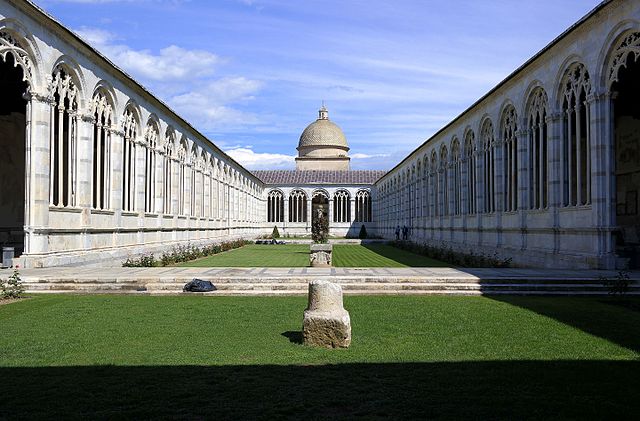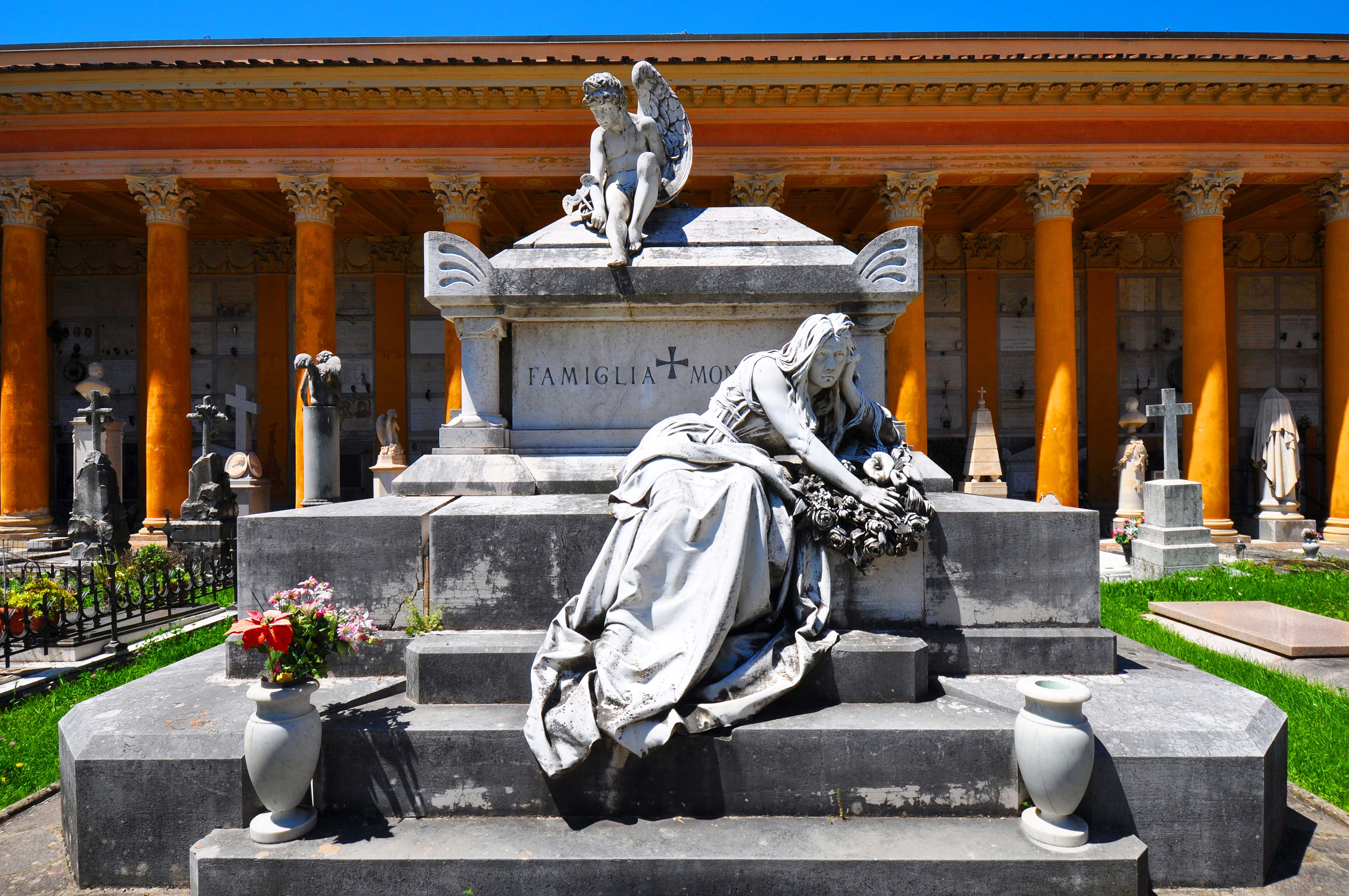The monumental cemeteries, silent gardens of eternity, are places where art, history and poetry intertwine in a unique harmony, offering visitors an unforgettable experience. Shrouded in mystery and solemnity, these sacred places caress the soul with their beauty, while revealing the hidden secrets of the past.
Walking among the tombs and mausoleums, the visitor is captivated by the charm of funerary art, a tangible expression of the love and pain that accompanied the passing of those who now rest in peace. The sculptures, bas-reliefs and tombstones tell stories of lives lived, of inextinguishable passions and vanished dreams, but also of hope and redemption.
Monumental cemeteries are also treasure chests where nature blends with art to offer scenarios of incomparable beauty. Centuries-old trees, fragrant flowers and lush shrubs enrich the soul and stimulate the imagination. Here, between stones and nature, the boundary between life and death thins, and you can connect with our history and our roots, perceiving the essence of our humanity.
Monumental cemeteries also in Tuscany, far from being places of disconsolate sadness, are magical places where art, poetry and nature come together in perfect harmony, offering visitors an exciting journey through time and space. In these corners of eternity, we can reflect on the fragility of our existence and on the beauty of love that survives beyond death. With their charm and solemnity, monumental cemeteries invite us to a profound meditation on life, death and the indelible traces we leave in the heart of humanity.
In Tuscany there are several monumental cemeteries, places of great historical, artistic and cultural interest. These cemeteries are home to a wide range of funerary monuments, sculptures and tombs that testify to the evolution of funerary art and burial practices in the region over the centuries. We take you with us to 5 most important and fascinating monumental cemeteries in Tuscany (plus an extra):
1. Cemetery of the Holy Doors, Florence

Located in the Basilica of San Miniato al Monte, the Cemetery of the Holy Doors is one of the oldest and most important cemeteries in Florence. Founded in 1360, it houses the tombs of numerous illustrious personalities of Florentine history, including members of the Medici and Strozzi families. The sculptures and monuments in the cemetery are works by renowned artists such as Michelangelo and Ammannati.
2. Monumental Cemetery of Mercy, Pisa

This historic cemetery is located in the center of Pisa, near the famous Leaning Tower. Founded in 1776, the Monumental Cemetery of Mercy houses the tombs of Pisan notables, including scientists, artists and politicians. The sculptures and monuments in the cemetery represent an important testimony of Pisan funerary art between the eighteenth and twentieth centuries.
3. Monumental Cemetery of Mercy, Livorno
Founded in 1840, the Monumental Cemetery of Mercy in Livorno is known for its neoclassical architecture and the numerous tombs of illustrious families and local personalities. The cemetery reflects the city's rich multicultural history, with sections dedicated to the diverse religious and ethnic groups that have contributed to the city's growth over the centuries.
4. Cemetery of San Colombano, Lucca
The Cemetery of San Colombano is an ancient cemetery located within the historic walls of Lucca, near the church of San Colombano. Dating back to the eighth century, the cemetery houses the tombs of numerous bishops and nobles of Lucca and presents a series of funerary monuments in different architectural styles, from Romanesque to Renaissance.
5. English Cemetery, Siena
Located near the Porta Camollia, the English Cemetery is a small cemetery dating back to the nineteenth century, intended mainly for the British Protestant community residing in Siena. The cemetery is characterized by a quiet and intimate atmosphere and houses tombs and monuments of neo-Gothic and neoclassical style.
6. Certosa Cemetery, Bologna

Although not located in Tuscany, the Certosa Cemetery in Bologna deserves a special mention for its historical and artistic importance.
Founded in 1801, it is one of the largest and most important monumental cemeteries in Italy. The cemetery is located within the complex of the Certosa di Bologna, a former church and monastery founded in the fourteenth century. The Certosa Cemetery houses tombs and monuments of numerous Italian personalities, including artists, politicians and intellectuals, and presents works by some of the most important Italian sculptors of the time.
The monumental Tuscan cemeteries offer a unique and fascinating insight into the history, art and funerary traditions of the region. These burial places, rich in artistic and architectural treasures, peace and silence, are a testimony to the different eras and cultural influences that have shaped Tuscany over the centuries. A visit to these cemeteries can provide a different and engaging perspective on Tuscan history and culture, as well as offer a moment of reflection and contemplation.
Image sources: Wikipedia, cimitero bologna blog










 Map
Map